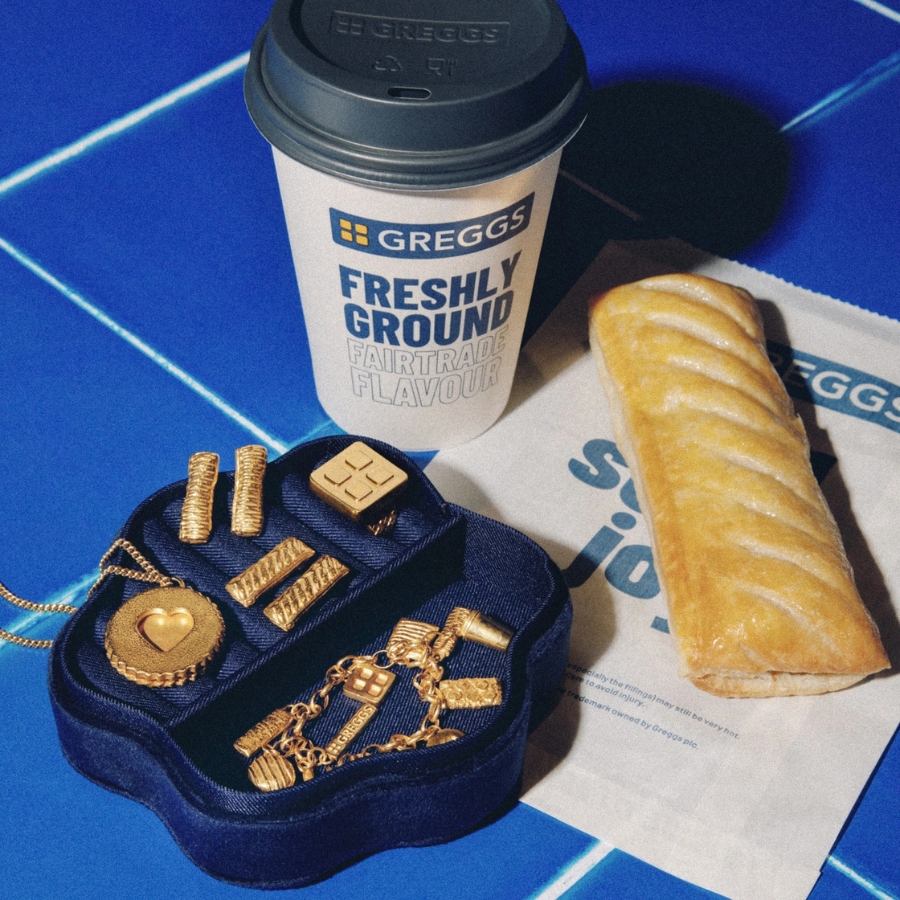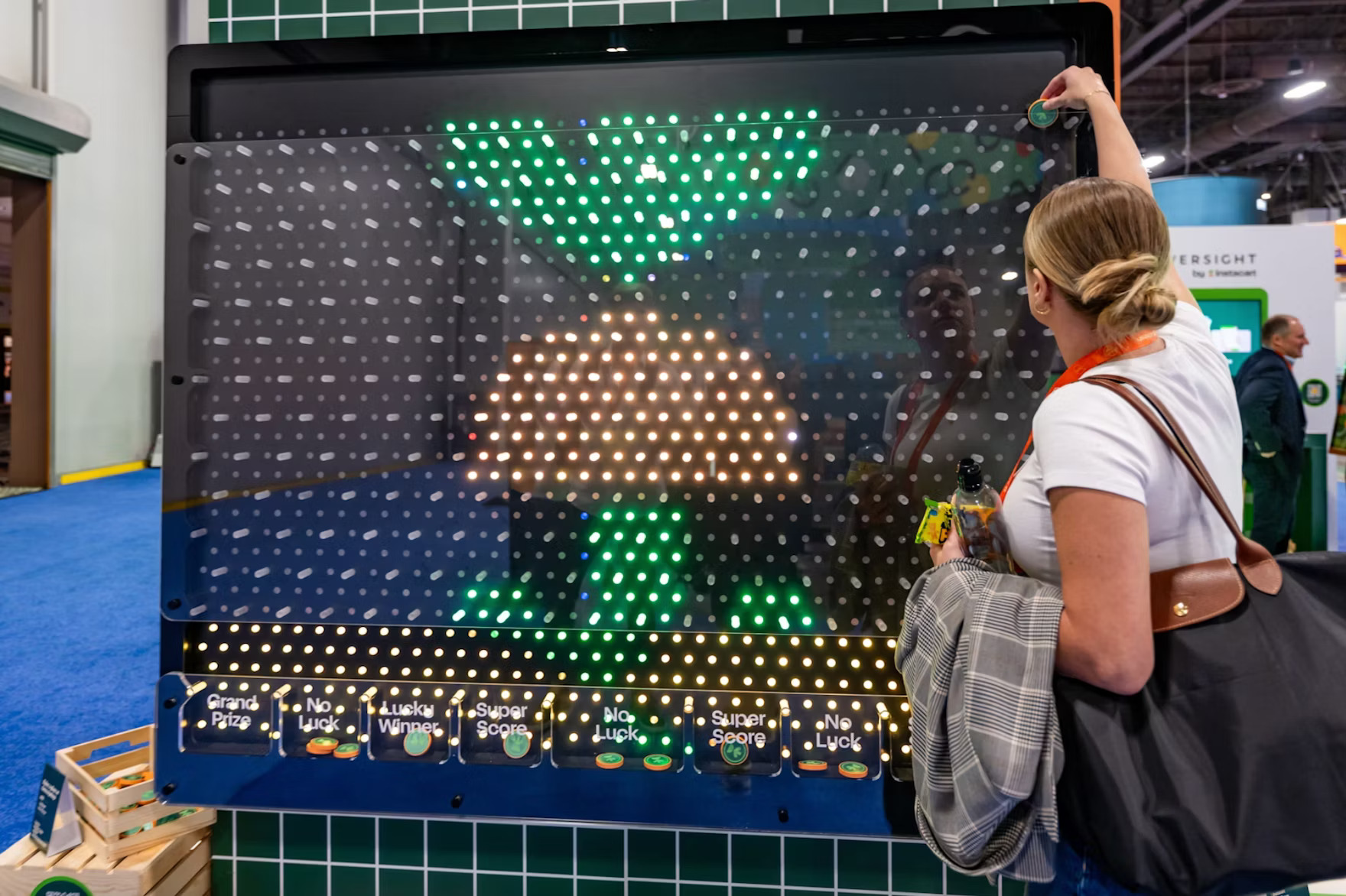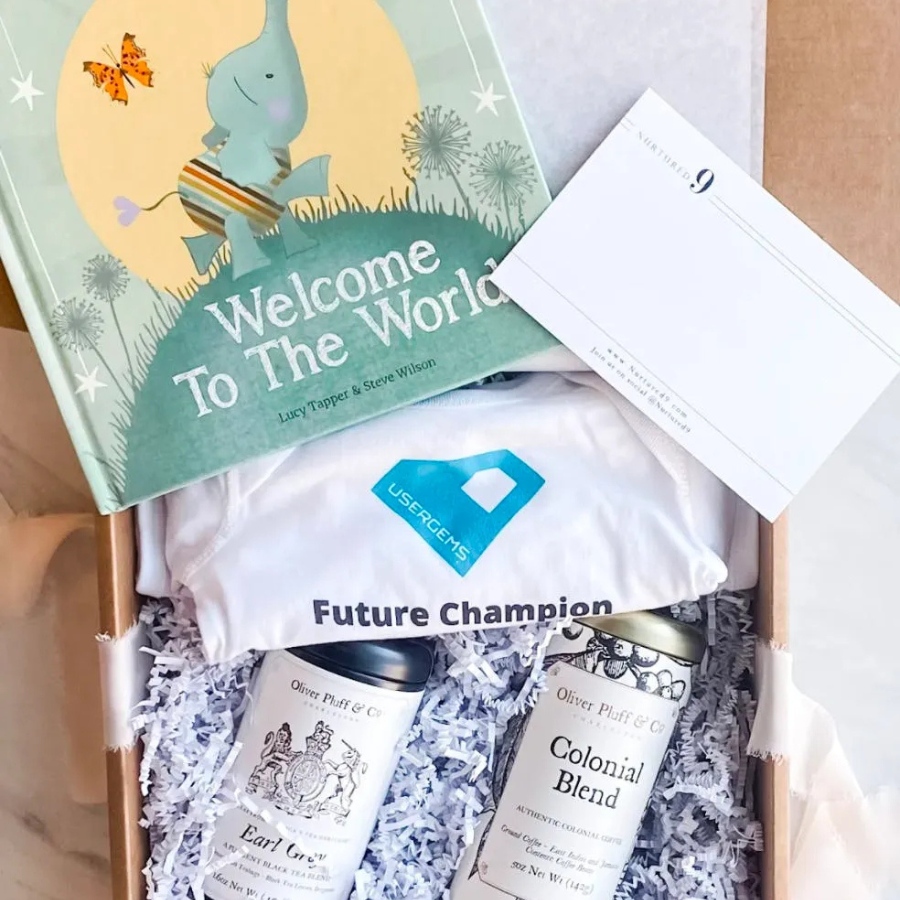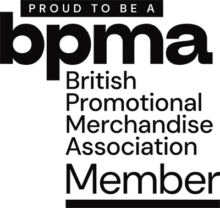Branded merchandise should move beyond simply printing logos on generic items. It should do more than carry your logo – it should carry your brand story. In 2025, it has to be about creating genuine brand experiences and driving measurable impact. Done right, merchandise can spark joy, loyalty and passion in customers and staff, and deliver real ROI.
Yet many brand-led businesses still treat merch as an afterthought, with little strategic consideration or brand alignment. And most merchandise providers are more than happy to stick to the same old transactional way of doing things.
Well, it’s time to rethink your approach. Below, we outline six innovative strategies to use branded merchandise more effectively, with bold ideas that go beyond the usual giveaways. Each strategy is geared toward senior marketing and brand leaders looking to turn “swag” into a strategic asset. Let’s dive in.
What we'll cover:
- Create buzz with limited editions and purpose-driven merch
- Bridge digital and physical for lead generation
- Turn social engagement into a brand content engine
- Elevate events with experiential merchandise
- Use strategic gifting to open doors and close deals
- Empower employees as brand ambassadors
- Making a success of your merchandise strategy in 2025
1. Create buzz with limited editions and purpose-driven merch
Nothing creates urgency and excitement quite like something that feels exclusive. That’s why limited-edition merchandise drops and purpose-driven collaborations have become powerful strategies for brands looking to differentiate themselves.
Rather than constantly churning out the same standard swag, leading brands are treating merchandise like hype-worthy product launches in their own right – complete with hot brand collabs, teasers, influencer tie-ins, and rapid sell-outs.
Real world example: Just check out the example above from Yeti X Liquid Death - a one-off cooler that generated so much hype it sold for over £53k at auction.
The psychology is clear: about 60% of consumers admit to purchasing because of a fear of missing out.
If people think “this won’t be available later”, they act now – and talk about it. For a brand, that means buzz.
Actionable ideas
- Themed drops: Plan a branded merch drop around a cultural moment or campaign. Number the items (1 of 500 etc.) to enhance collectability. Promote it like an event – countdowns on social media, sneak peeks, and maybe a tie-in event or live stream. If the items are well-designed and genuinely limited, expect them to go fast, generating that all-important FOMO among those who missed out.
- Collaborate for clout: Partner with a complementary brand or influencer on co-branded merchandise. This could be as simple as a popular Instagram creator curating a “favourites” swag kit from your offerings, or as big as two brands co-designing a product. Collaborations harness two audiences at once and often yield press coverage.
- Merch with a mission: Pick a cause that resonates with your company and audience, then design merch around it. For example, a tech company might create a sleek reusable water bottle with a tagline about coding a better future, and donate a portion of each bottle’s cost to a STEM education charity. It’s marketing, CSR, and brand-building all in one.
Real world example
Greggs nailed this technique when they collaborated with artist Dion Kitson on their limited edition “Baked in Gold” jewellery collection. They generated a huge amount of hype in advance of a publicised launch and sold the whole lot in 48 minutes.

By injecting exclusivity and purpose into your merchandise strategy, you break out of the “swag slog” of generic goods. Instead, you create moments – product drops that people mark on their calendars, or items people wear as a badge of their (and your) values.
2. Bridge digital and physical for lead generation
One of the smartest modern uses of merch is as a phygital lead magnet – combining digital campaigns with physical rewards. Instead of a generic e-book, imagine offering a targeted audience a free, desirable branded item when they engage online. This approach taps into people’s curiosity and reciprocity – they’re far more likely to share information or opt in when there’s a tangible reward.
Actionable ideas
- Click-to-claim campaigns: Use paid ads or email campaigns to offer a limited number of branded gift packs for sign-ups or demo requests. Make the offer feel exclusive and urgent (e.g. “First 100 respondents get a VIP merch kit”).
- QR code redemption at events: At trade shows or webinars, hand out cards with QR codes that lead to an online form to redeem a prize later. This extends engagement beyond the event and pulls prospects into your digital funnel.
- Lead-gen swag funnels: Incorporate merchandise into your lead funnel stages – a small branded welcome gift on initial sign-up, a bigger reward once a prospect completes a sales call, etc. This creates a tiered incentive that motivates deeper engagement.
Real world example
Coca-cola bridged the online offline divide with a super-engaging scavenger hunt at a music festival. Players had to provide their contact information in return for receiving the check-in points, and had to complete the course to receive their swag.

By bridging online and offline in this way, you not only capture leads but also make your brand more memorable. The key is to choose merchandise that’s appealing and relevant to your audience – something they’d want to earn, not just another cheap trinket.
3. Turn social engagement into a brand content engine
In the era of TikTok and Instagram, merch is fuel for social media engagement. Smart brands use branded merchandise to incentivise user-generated content and word-of-mouth online.
The principle is simple: people love showing off cool stuff, so give them something worth sharing and a reason to share it.
This approach not only spreads your brand to new audiences organically, it also provides you with authentic content.
Actionable ideas
- UGC contests: Run a contest where customers create content with your merch. The best entry could win an upgraded merch bundle or a special edition item. This leverages the fact that real customers’ posts often carry more credibility and reach than traditional ads.
- Merch for mentions: Reward social media engagement directly. For example, “Retweet and tag a friend for a chance at a swag pack” or “The first 50 people to comment on our post get a free gift.” This strategy turns passive followers into active promoters as they compete for goodies.
- Influencer kits: Identify micro-influencers or loyal fans and send them high-quality branded kits as a surprise. Many will unbox these on camera or mention your brand out of sheer appreciation. Offering free products in exchange for social posts is a cost-effective way to tap into influencer reach without large sponsorship fees.
Real world example
Calvin Klein have always been masters of this. With their #mycalvins campaign, they combine paid influencer collaborations with organic uptake. Seeding through partnerships to inspire organic sharing. And the results speak for themselves, with the hashtag used over 850k times on Instagram.

Be sure that when people do share content featuring your merch, you amplify it – repost it, celebrate it. Not only does this encourage others to join in, it humanises your brand. In 2025, social proof is gold. By turning your customers and fans into a content engine, your merchandise transcends its physical value and becomes a catalyst for online buzz.
4. Elevate events with experiential merchandise
Despite all the digital channels, in-person experiences (or virtual events) remain crucial – and merchandise can make those moments truly memorable. The key is moving beyond the cliché of a conference tote bag filled with future landfill.
Experiential merchandise means using branded items to engage attendees, tell a story, or encourage interaction.
The goal is to ensure anyone who encounters your brand at an event walks away with not just a freebie, but a lasting impression.
Actionable ideas
- Interactive giveaways: Instead of pre-made merch, let attendees personalise something on the spot. For example, a live t-shirt printing booth where people can customise their shirt design. This turns a simple giveaway into an experience they’ll line up for and share about (because they had a hand in creating it).
- Themed, relevant gifts: Align your merchandise to your event theme or your product’s value. For example, a heating and air conditioner business might hand out gel-pack hot/cold packs shaped like a house – a clever nod to their heating and cooling services. This kind of creativity makes your brand message tangible. Attendees will remember who gave them that useful, on-brand item (while the umpteen generic stress balls from other booths get tossed in a drawer).
- Gamified rewards: Use merch to drive certain behaviours during the event. You can implement a tiered reward system: Visit our booth, get a small gift; stay for a demo, get a bigger one; book a follow-up meeting, earn an executive gift.
Real world example
Instacart went all out on their stand at Groceryshop 24 with a gaming theme and excellent production design. But a particular highlight was their use of a plinko game which gave potential clients a creative and thematically relevant way to win some merch.

By planning merchandise as part of the experience – not a last minute panic purchase – you transform it from a cost center to a marketing multiplier. In 2025, every event impression counts, and smart merch strategy ensures yours aren’t lost in the crowd.
5. Use strategic gifting to open doors and close deals
Not all branded merchandise strategies are about scale or public campaigns – some are highly targeted and personal, especially in B2B and high-value customer contexts. Strategic gifting is the art of using carefully chosen branded items to build relationships with key prospects, clients or partners.
Considered gifting can grease the wheels of conversion and keep customers coming back again and again.
A tailored gesture that makes the recipient feel valued and keeps your brand top-of-mind, warming up a cold prospect or re-engaging a lapsed client better than yet another email could.
Actionable ideas
- ABM gift packs: Work with sales to identify top 20–50 “dream accounts” and send a creative gift that ties into your pitch. Personalise it to the recipient’s profile if possible. Include a handwritten note and a clear next step (e.g. an invitation to a VIP demo). The personal touch plus tangible value helps break through busy executives’ defenses.
- Milestone appreciation: For key clients, use branded gifts to celebrate milestones – contract anniversaries, major deployment go-lives, etc. A premium gift (think custom engraved item, luxury food gift with your logo subtly included, or a limited edition company-branded tech gadget) at the right moment shows you care about the relationship, not just the sale.
- Surprise and delight: Don’t limit gifting to formal programs. Empower your account managers or sales reps with a “swag arsenal” they can deploy strategically. For example, if a prospect mentioned their love of coffee in a call, follow up by sending a quality coffee tumbler with your branding and a Starbucks voucher. These little surprises based on personal insights demonstrate attentiveness and creativity.
Real world example
This example from Usergems is a simple concept well executed. Targeting a prospect that’s expecting a new arrival with a bespoke new baby themed gift box, complete with branded babygrow.

The key with strategic gifting is quality over quantity. We’re not talking cheap promo items here, but well-crafted merchandise that reflects your brand’s values and the recipient’s interests. Track the results in your CRM to see how they correlate with pipeline movement.
6. Empower employees as brand ambassadors
Your employees are a massively underutilised marketing channel. In large brand-led organisations, staff should be walking (and talking) embodiments of the brand – and merchandise can help activate that..
Equipping your team with awesome branded gear instils pride and creates hundreds of micro-influencers who promote your company in their daily lives.
When employees wear branded apparel in public or use company swag in their social media posts it signals a strong culture and extends brand visibility into personal networks.
Actionable ideas
- Onboarding kits worth sharing: Ditch the token pen and notepad. Invest in creative, high-quality items for new employees (think personalized apparel, gadgets, or desk toys with inside-joke messaging). If the kit makes them say “wow,” they’ll share that excitement online.
- Internal merchandise drops: Treat your employees like your best customers. Do limited-run merch drops just for staff – for example, a t-shirt with a catchy slogan reflecting a project victory or a hoodie in a bold design. Make it feel exclusive. Employees will feel appreciated and are likely to wear these limited items proudly outside of work.
- Referral and advocacy incentives: Encourage employees to actively promote the brand. This could be a program where staff get points or rewards (including premium branded gifts) for referring new clients, sharing company posts, or writing about their work life. Essentially, turn advocacy into a game – with desirable merch or other perks as the prize.
When employees authentically endorse the brand, it carries weight. Their friends, family, and online followers see those organic posts or everyday use of branded items and gain trust in your business.
Making a success of your merchandise strategy in 2025
At ORB, we’re trying to drag branded merchandise into the modern age, taking it from dull to dynamic, and you can join us on that journey. The six strategies above – from phygital lead-gen campaigns to hype-building collabs – demonstrate that merch can be so much more than conference fodder. It can be a lead driver, a social media star, an employee engagement tool, a deal-closer, an experiential enhancer, and a brand statement all at once.
The common thread is creativity and strategic thinking: treating merchandise as an integrated part of your marketing and brand experience plan, not a last-minute add-on.
For senior marketing and brand leaders, the challenge (and opportunity) is to champion this fresh approach. Break the norms of the dated promo industry by demanding more – more innovation, more alignment with your brand story, and more measurable impact. When you do, the results speak for themselves.
We’ve seen companies generate surges in engagement and sales by innovating in this space, and employees and customers alike light up with genuine excitement when they encounter merch that’s thoughtful and different. In a world increasingly defined by digital touchpoints, the tactile connection of a well-placed piece of merchandise can create a lasting impression that screens alone cannot.
In 2025 and beyond, the brands that win will be those that make every experience count. It’s time to rethink your swag strategy and make it work harder (and smarter) for you. The bar has been raised – and we’re on it.
